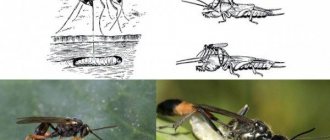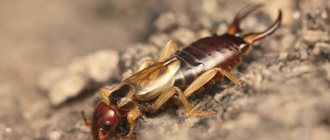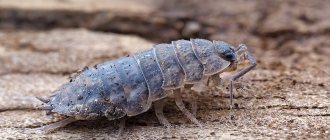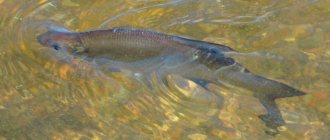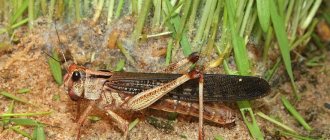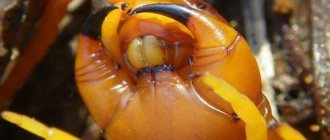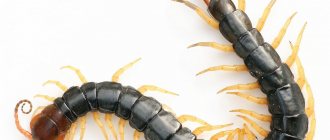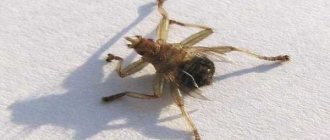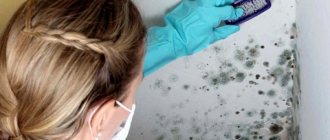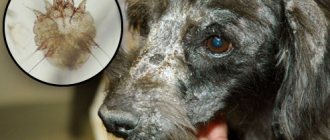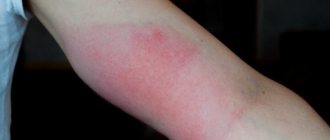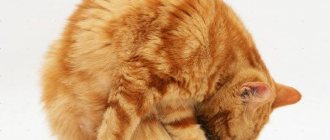Insect riders: general information
The description of these parasites is quite interesting. The diversity of insect forms is combined with the abundance of their varieties. The largest species reaches 5 cm in length, and the smallest – up to 0.5 mm. Riders have long antennae, their bodies are very thin. They are often black with gold and red patterns. Most pests have colorless wings, but wingless specimens can also be found. Females carry an ovipositor on the back side, which can even exceed the length of their body.
Wasp rider: photo of insect
The ichneumon wasp in Russia is represented by small-sized individuals, as can be seen if you look at a photo of the insect. The body length of the smallest representatives is 3 mm, and the largest individuals can reach 3 cm. Representatives of the genus live in the tropics, which have significantly larger body sizes. The color of insects also varies from a translucent shade to a rich black color.
Characteristic external features of the ichneumon wasp:
- long elongated abdomen;
- transparent wings of small thickness like those of a dragonfly;
- thin waist;
- a few species have a long tail.
Some members of the family lack wings and look more like ants.
Common varieties
As already mentioned, there are many varieties of ichneumon wasps. In temperate climates, the most common superfamilies are:
- Mimarommatids, capable of living even in subantarctic zones and parasitizing insect eggs.
- Nutcrackers, which are both parasites and phytophages (feed on plant foods).
- Proctotroupoid riders with microscopic dimensions (body length - up to 5 mm). They are used as a biological agent in pest control.
- Chalcids, of which there are 200 species in Europe. Beneficial insects that destroy other harmful arthropods; and some of their species are involved in plant pollination.
- Evanioid riders, the abdomen of which is diagonally raised relative to the chest. They choose wasps, cockroaches, and sawflies as their victims.
Description and features
People for the most part do not like insects and treat them with arrogant disgust. Of course, compared to us, the highly developed inhabitants of the planet, at first glance they seem primitive, unpleasant, often annoying, and sometimes even downright disgusting. But still, the world of insects is a whole universe of amazing creatures worthy of the pen of a science fiction writer.
After all, each of these creatures has its own unique abilities. For example, the hero of our story, the insect rider, is endowed by nature with the interesting property of turning its own kind, that is, representatives of the class of insects and other arthropods, into real zombies. We have to find out how this happens and why riders need it.
Such creatures can be very small, barely noticeable, less than 1 mm in size. But there are also huge varieties in comparison with babies, reaching a length of up to 5 cm. In appearance, equestrians are very diverse. At a superficial glance at representatives of individual species, you can mistake them for ordinary beetles.
In fact, these are more likely wasps, and even look similar to them, but instead of a sting on the back, they have a very noticeable ovipositor, pointed at the end, often comparable in size, and sometimes even larger (in special cases 7.5 times ) of the insects themselves, but in some cases very tiny.
With the help of this organ, these creatures place eggs in the bodies of their victims, and only in this way are they able to exist, develop and continue their race. Ultimately, the life activity of equestrians most often turns out to be useful for humans.
Although, in fact, for arthropods they are very dangerous parasites, and therefore they are often called parasitic wasps. According to the systematization of living organisms, they belong to the stalked bellies. This order includes the same wasps, as well as bumblebees, bees, and ants. And therefore it turns out that these are the closest relatives of the riders.
The body of the described creatures is elongated in shape and is supported by six thin legs. These insects have a small head, equipped with long antennae extended forward like antennae.
These devices help them recognize their surroundings. The riders are hymenoptera , and therefore representatives of most species have membranous, elongated, transparent wings with a brown or grayish tint, mottled with veins. But there are also wingless varieties, which are very reminiscent of ants.
Other riders, due to the abundance of different colors inherent in them, are often confused with related bees, as well as with a number of other insects. Riders come in bright red, orange, spotted, and striped colors. But the most common body color is predominantly black, complemented by bright, different shades of transitions.
Mistaking ichneumon wasps for wasps, people are often frightened by their huge ovipositor, believing that it is a terrifying sting that is poisonous to humans. But this opinion is wrong. By the way, only females have this terrible organ, and the male half is naturally deprived of it, as well as, of course, the ability to lay eggs.
Description of appearance
The ichneumon beetle is not actually a beetle, as everyone is used to seeing it. It belongs to the order Hymenoptera, suborder Stalk-bellied and more closely resembles a dragonfly or wasp. There are about 100 thousand species of such insects, which are parasites for many pests. Their sizes range from 1 mm to several centimeters.
The body of the Hymenoptera has an elongated shape. At the end of the back there is an impressive ovipositor - an organ designed for laying eggs. Its size is sometimes comparable to the size of the entire insect. The end of the ovipositor is pointed so that it can be immersed in the body of the victim or even pierced the bark of trees.
The rider has 3 pairs of legs, a relatively small head with long antennae located on it. They serve their owner as sensory organs. The wings have an elongated shape; when folded, they are located one above the other on the back of the insect. The females of some species of parasites lack wings, which makes them very similar to ants.
On a note!
At the first glance at this unusual creature, the question arises: is the ichneumon beetle dangerous to humans or not. For this parasite, humans are of no interest. Most species do not even have jaws and are unable to bite, and those that do can only deliver a harmless bite as a last resort.
The predominant color is black with shades of yellow, orange or red. The paws are usually a shade of tan or red. The wings are transparent with gray or brown tinting. The Internet contains photos of an ichneumon beetle with an unusual body color: striped, spotted, bright orange, red. Due to such a variety of colors on the body, they are often confused with wasps, bees and other insects. In addition, their oviparous organ strongly resembles a sting.
Beetle rider
Lifestyle and habitat of long-tailed wasps
The predominant habitat of most of the 100 thousand species of ichneumon wasps present today is the tropics. In temperate latitudes (in Russia) only a few varieties can be found. What they all have in common is the laying of eggs or larvae on or directly into the body of caterpillars and other insects. Not everyone is capable of stinging.
Wasp wasps do not look too threatening, especially those found in Russia. Their size ranges from 3 mm to 3 cm in length, and the chance of meeting the largest representatives is extremely low due to their extreme rarity. All types have different colors: from translucent to rich black.
Wasp rider
For your information! The insect has 6 legs, an elongated abdomen ending in a sharp ovipositor, a thin waist, transparent or colored wings, most similar to the wings of a dragonfly. There are species of wasps without wings at all, very similar to ants. A wasp with a long tail looks interesting.
Riders do not have a sting. Instead, there is a long ovipositor. However, the insect is quite capable of causing harm, since a special poisonous secretion is released from the ovipositor. Having pierced the skin of the enemy with its sharp end, the wasp injects poison, which has a paralyzing effect, although it does not pose a danger to the life of the insect. All riders are parasites, which are divided into 3 groups:
- ectoparasites that attach eggs and larvae to the body surface of other arthropods;
- endoparasites that introduce eggs into the body of other insects, using paralyzing poison;
- superparasites that are capable of infecting their own kind.
Varieties
Braconids
Three species of Braconidae are found on all continents. In total, biologists have described more than 15 thousand species. Braconids are successfully used by humans in the fight against
agricultural pests. They feed on caterpillars of leaf roller butterflies and granary moth (damaging flour, grain, dried fruits, confectionery, spices, etc.)
The color of an adult is dark brown with yellow and black splashes. Body length 2.5 centimeters. The ovipositor in females is relatively small (slightly shorter than the abdomen).
Eggs are laid on caterpillars in the amount of 20 pieces. Before laying, the caterpillar is paralyzed by poison. The larvae appear after twelve hours. Actively consuming the caterpillar, they go through all stages of development in five days. The pupation stage lasts four days. Adults have different life expectancies. Males live ten days. Females are a month old.
Trichogramma
Trichogramma is another family of equestrians useful to humans. There are 200 species of Trichogramma in the world.
The size of adults is up to 1 millimeter. Color black or brown. The body is dense, the head has short antennae. The larvae parasitize the eggs of leaf rollers, moths, silkworms and cabbage cutworms.
Up to four eggs are laid in the host insect egg. Pupation occurs in the body of an already dead host (at the larval stage).
This rider is extremely useful for agriculture. Adults are released per hectare, based on strict calculations (up to 50 thousand). This happens when pests lay eggs. Trichogramma parasitizes more than seventy species of agricultural pests.
Drinids
Dryinidae are small parasitic wasps found throughout the world. They tolerate low temperatures well. Some species live in the northern regions of Europe. A total of 48 genera of these insects are known.
Adults have a dark color. The body is slender with a narrow abdomen and long legs. Females have no wings and look like large ants. Sizes from 2 millimeters to centimeters.
Before laying eggs, the female paralyzes the victim only for a while. Subsequently, the infected larvae continue to move and develop.
Dryinids feed on homoptera (crop pests) and members of the cicada family.
Chrysididae
Chrysididae parasitize bees and wasps. There are 3 thousand species of these riders in the world.
They are distinguished by their bright body color. There are red, green and blue colors. The body is smooth and shiny. Hence the three-fold name - the glossy wasp.
Settles in earthen burrows. The adult size is 1.5 centimeters. The abdomen is concave. In females, the ovipositor is thin and retracted into the abdomen. Thanks to this, the insect can easily push it into hard-to-reach places such as cracks in hives. Causes significant damage to apiaries. Young bees infected with larvae die.
It has a sting, like a real wasp. The glitter can bite painfully. However, the bite is not dangerous to humans.
More often, when frightened, the insect simply curls up into a tight ball and freezes.
Orussids
Orussidae live primarily in coniferous forests. They parasitize wood beetles. There are eighty species of Orussids throughout the world. Representatives of seven species are found in Europe.
The size of an adult reaches 1.5 centimeters. The body is black with a bright orange belly and well-developed paired wings. In females, the ovipositor is retracted into the abdomen.
Eggs are laid on weakened larvae of horntails, longhorned beetles and golden beetles. Having destroyed the host, the larva spends the winter in tree tunnels cut through by beetle larvae. Pupates in early summer. Soon, adults emerge from the pupae, chew through the wood and come out in search of a mate. After mating, the female crawls along the bark of trees in search of future food supply for the offspring. Having found the beetle larvae, she lays eggs in them through natural cracks in the bark.
Ephialtes
Dolichomitus imperator is the largest ichneumon species in Europe.
Adults reach a length of 3 centimeters. The body is shiny, black, with small white spots. Legs are reddish. Females are distinguished by their enormous ovipositor size (about twice as long as the abdomen). They feed on nectar and sap of woody plants.
Ephialtes larvae parasitize the larvae of longhorned beetles and borers (pine pests). The female is able to find future carriers at a depth of up to four centimeters. To reach them, she drills into the tree bark with a strong ovipositor. The drilling procedure takes several hours. In this case, the insect corrects, if necessary, its position relative to the beetle larva. The egg is placed directly into the body of the paralyzed victim.
One of the most dangerous types of flies is the tsetse fly. She suffers from sleeping sickness, which is practically incurable. Horseflies carry pathogens of such dangerous diseases as polio and anthrax. What the parasite looks like, see this article.
The red forest ant is one of the most common species in Russia. Read about other ants that can be found in Russia by following the link.
Megarhyssa perlata
Megarhyssa perlata is a rare species of ichneumon, listed in the Red Book. On the territory of Russia it is found throughout the forest zone.
The adult size is 4.5 centimeters. The body is bright orange. The elongated abdomen has black and white stripes. The head antennae are long and light. Females have a long, hard ovipositor, approximately twice the length of the abdomen. Adults feed on flower nectar.
The larvae parasitize on pests of deciduous trees - horntails. The female lays eggs in tunnels made by pests, having previously drilled through the bark with an ovipositor. The larva emerging from the egg behaves actively. Moving along the passages, it finds the owner and attaches itself to his body.
Lives on the surface of the host's body as an ectoparasite.
Habitat and lifestyle
Most species of ichneumon live in tropical climates. Only a few representatives are able to coexist in Russian latitudes: mimarommatids, mutilids, gallworms, chalcids, evanioid wasps, typhiids. Most often, the parasite can be found in places of high humidity: rivers, swamps, bets. In agriculture, proctotrupe parasites are used to control pests.
Long-tailed wasps are diurnal and at night they hide in the grass, under leaves and tree bark. They identify their prey by smell, sound and subtle vibrations in the air. The parasite is not aggressive, but during the breeding season it flies out to hunt.
This is interesting! Riders do not form nests and do not gather in one place as a whole family. After all, the female needs to constantly be in search of a potential victim and roam. The exception is pompilids (living in the USA), which settle in the ground near roads.
Life cycle and mechanism of influence on the victim
The ichneumon wasp is a solitary insect; it makes its nest directly in the ground or in plant stems or tree bark. Its lifespan, as a rule, is short: for females it is about a month, and for males it is no more than 10 days. In some species, the larvae can overwinter in the body of the prey host and pupate only in the spring.
For the most part, adults are not carnivores, that is, they do not feed on other insects; For some species, nectar serves as food. But the larvae can be considered true parasites, given how reproduction occurs.
Female wasps lay eggs on the bodies or larvae of ants, wasps, beetles, caterpillars, spiders and even scorpions, on which the hatching larvae feed. During the process of laying eggs, the female parasite sits on top of her victim, resembling a rider on a horse, which gives the name to this entire family.
This parasitic insect has an amazing sense of smell, which allows it to sense even through the thickness of tree bark whether there are beetle larvae there on which to lay eggs.
By laying their eggs on the body of the victim, the females inject it with a paralyzing poison, turning it into a “zombie”. It takes less than a day for about two dozen larvae to hatch on a victim, and only a few days for them to go through all stages of development.
Throughout this period, they feed on the body of their “master”, while maintaining the viability of his body; it dies from exhaustion only before the time comes for the larvae to pupate.
Preventing an attack
The main prevention of a rider attack is considered to be careful behavior in nature. You should not come into contact with the parasite, try to catch it or kill it. When getting ready for a picnic or to a pond, you should wear thick clothes with long sleeves. It is better to treat children's skin with repellents, which will also protect the baby from bites of mosquitoes, other wasps, and midges.
Wasps are parasites that are harmless to humans and attack only insects. Fertilized females hunt for caterpillars, beetles or other wasps to lay their eggs. The hatched larvae are very voracious and can completely destroy the prey in just 5-6 days.
Kinds
The species diversity of such parasites is truly enormous. There are more than a dozen superfamilies into which they are united. species of riders themselves amounts to hundreds of thousands. It is impossible to describe them all, so it is better to talk in general terms about some of the most common or distinctive groups of these insects.
Representatives of the chalcid superfamily are quite small, in some cases even microscopic in size. Some species are so tiny that they cannot be seen with the naked eye. And it’s not surprising, because the length of especially small ones does not exceed 0.2 mm.
Their color varies. But all varieties (it is assumed that there are about half a million of them in nature, although only 22,000 of them have been truly described by biologists) have one common feature: the structure of the wings, which have only two veins. From a scientific point of view, such creatures are interesting because they parasitize not only small representatives of the fauna, but also plants.
The chalcid superfamily is in turn divided into families, some of which will be listed below. It should be noted that they themselves include many varieties.
- Leucopids in color, black with yellow stripes and spots, and body shape with an elongated, convex abdomen, are very similar to wasps, which, by the way, they parasitize. Their antennae are short, but placed on a large head. Such creatures are quite noticeable to the eye, on average about 7 mm. Also parasitizing bees, these riders harm apiaries.
- On the contrary, aphelinids turn out to be very useful because they destroy aphids and scale insects. They rarely exceed 5 mm in size. These creatures have powerful jaws, a narrowed head, and small fringed wings.
- The agonids are comparable in size to the previous group. In males of certain species, underdevelopment of wings and one of the three pairs of legs is observed. These are plant parasites that place their eggs in figs.
- Trichogrammatids are millimeter-long babies. This group is very useful, as it destroys agricultural pests, in particular codling moths and cabbage moths, in addition – bedbugs, dragonflies, butterflies, and beetles.
- Aphelinus. This is the name of a genus of fairly large representatives from the aphelinid family. These creatures have a black color, in some cases with a yellow pattern. The sizes of such riders are on average centimeter. Due to their benefits for garden crops, these insects were deliberately brought to Europe from America. Destroy blood aphids and other pests. The single egg they lay in their prey turns it into a dried-out mummy as it grows.
- Plum seed eater, about 3 mm in size. Its body is green, its antennae and legs are yellow. The name itself suggests that such creatures are garden pests. In addition to plums, they infect the seeds of apple and pear trees.
- The plum beetle is a black insect with yellow legs, about 5 mm in size. Lays eggs in plums, apricots, cherries, and very often in cherry plums and almonds, thereby destroying them. The wings of these creatures have not even two, but one vein.
Now let's introduce some members of other superfamilies. Without a doubt, they are numerous and varied, like the entire world of insects. Most of these riders are useful. They help many plants and free the environment from pests.
- Rissa is a black ichneumon, but with yellow stripes on the abdomen, and has a huge ovipositor. This is a forest orderly that kills wood pests: horntails, beetles, longhorned beetles and others. It detects its victims by smell, and its larvae eat their internal organs.
- Panisk looks like a huge black mosquito with red legs. Protects grain crops by parasitizing their pests. In addition, it infects moth caterpillars with its eggs.
- The Ephialtes Emperor is a gigantic specimen of an equestrian, of course in comparison with its smaller relatives. Its body reaches a size of 3 cm, but the size of the ovipositor is even larger. He himself has an elongated dark red abdomen, a black body and red legs. Destroys wood pests.
It is possible to systematize equestrians not only by species and families. As parasites, they are grouped according to how they infect their victims. Here it should be taken into account that it is not the adults who are afraid of the victims.
The attackers do not directly take part in the destruction, but only their eggs, which develop inside and outside the so-called hosts and feed on them. And therefore we can distinguish the following groups of riders, without exception, all species of which are parasites:
- ectoparasites attach their clutches to the outside of the victim’s body or simply leave them close to its eggs, and infect mainly pests hiding deep inside trees and fruits;
- endoparasites make their clutches in the internal tissues of the victim, their larvae develop longer than those of the previous group, but as they grow, they most often leave only an external, surrounding void, shell with the hosts; all the insides are eaten.
Harm and benefit
By attacking pests of trees and plants, riders provide significant assistance in their extermination. Some species of these beneficial insects are even protected by the state as valuable helpers. They control the number of harmful insects, thereby establishing balance in nature.
Thanks to the work and active participation of parasitic riders in the destruction of harmful insects, agricultural workers and ordinary plot owners can reduce the use of toxic substances and chemicals in their beds. This has a positive effect on the quality of the harvest and the environmental situation.
Often riders can be found in warehouses of grain and bulk products. There they look for their victims - barn worms and food moths. In rare cases, if they fail, they can lay eggs in food products, which will lead to damage to the goods and damage to humans. But, given the number of pests destroyed, minor sabotage on the part of the parasitic rider will not spoil its image in the eyes of people. Therefore, when you see these strange insects with a long sting-tail in your garden or garden, do not rush to destroy them.
What kind of wasps are found in Russia?
Crabronids (sand wasps)
Compared to the tropics, the Russian climate is poorly suited for most riders. And yet, in Russian latitudes they are also found, although less frequently. The most common types:
- Mimarommatids. A tenacious detachment, whose representatives live even in the subantarctic. They lay their eggs on the eggs of other arthropods.
- Mutillids (German wasps) are distinguished by their attractive appearance and bright colors. Over 4 thousand species of mutilids are found in nature, and in all of them the males are larger than the females. The size does not exceed 3 cm, and the body is covered with hard hairs. They lay eggs on wasps, bees and flies.
- Nutcrackers. Like relatives, they lay offspring on insects. Adults feed on plant juices.
- Proctocorpoid riders. An adult has a microscopic body length of a maximum of 5 mm. In agriculture they have found application as a means of biological protection against pests.
- Chalcides. One of the most numerous orders, which includes up to 200 species. Its representatives are highly valued in agriculture because they destroy those insects that pose a threat to pollinators.
- Evanioid wasps. They differ in their special body structure. Their abdomen is raised from the chest. They leave offspring on other types of wasps, on cockroaches and sawflies, for which they have gained fame as protectors of the forest.
- Typhia. About 20 species are found in Europe, and another 30 in Russia and the CIS countries. The body length of an adult does not exceed 1 cm. They usually have a black body color and brown wings. They prefer to lay eggs on beetles: dung beetles, May beetles and others. A rare case of symbiosis, since the victim does not die immediately, but continues to coexist with the wasp larva.
Japanese hornet
For your information! In the United States, the most common species is pompilidae (road wasps), which live in nests that are built in the ground, often along roadsides. They lay their eggs mainly on large spiders. In total there are about 4900 species of pompilids.
Crabronids (sand wasps) are common in Europe, over 600 species in total, but in total there are about 8 thousand varieties known, found throughout the planet. They usually make holes in the sand, where larvae are raised in nests. Food (bees, other wasps, other hymenoptera) is delivered to them by adult individuals, paralyzing the victims with their poison.
The remaining very numerous families of ichneumon wasps prefer the hot and humid climate of the tropics and subtropics. In the relict forests of the Amazon you can find unique insects up to 8 cm in length. It is noteworthy that scientists still continue to find new species, while a considerable number of unique insects are so rare that they can be classified as endangered.
Are they useful or harmful?
To understand whether an ichneumon insect poses a danger to humans, it is worth remembering that they do not have a sting, and their mouthparts are adapted for collecting nectar or plant juice. Scolia, a parasitic wasp from the suborder of stinging insects, can bite, or rather sting, a person.
Parasitic parasites are used as a means of biological control on an industrial scale against insect pests. Trichogramma parasites are bred in laboratory conditions and released on agricultural land (50 thousand individuals per 1 hectare) in two stages before the insect pests lay eggs. Used to combat 70 types of pests to protect:
- cabbage;
- tomatoes;
- apple orchards;
- corn fields;
- sugar cane.
Reproduction and lifespan
Having reached adulthood, riders do not live long, usually no more than three months. And only in cases when, during the period of completion of formation, they are caught by cold weather, they go into forced wintering, and in the spring they complete their life cycle and die. In this case, their lifespan can be up to ten months. Each species approaches reproduction individually.
After mating, the female ephialtes ichneumon has to look for a suitable longhorned beetle larva in the bark of a tree. To do this, she runs along the trunk and taps everywhere with her antennae. Based on this sound, it detects the location of the object.
Next, she drills into the wood with her ovipositor, standing on her hind legs, spinning it like a top. This work lasts at least two hours. When it reaches the larva hidden in the trunk, the parasite places a single egg inside it.
The number of eggs of small species from the braconid family reaches 20 pieces. They paralyze the caterpillars, which are their main carriers, with poison. Not even a day passes after the attack before the larvae appear.
They complete all stages of formation in five days, and pupation lasts another four days. But developing rapidly, such creatures live extremely short lives: males - no more than 10 days, and the female half - only a month.
Large braconids can infect ladybugs by placing an egg inside. In this case, facial development occurs more slowly, sometimes more than three weeks. It feeds on the connective and fatty tissues of the cow.
And at a certain time it leaves the body, but not the victim. In this case, the larva gnaws the motor nerves and paralyzes the cow. Then a cocoon is formed under it. Thus, about a week passes in the pupal stage, and then the tormentor leaves forever for adulthood.
Reproduction
Adult parasites do not live long. Their main purpose in life is reproduction. The fertilized female must find a suitable victim to lay offspring. Each species of ichneumon is characterized by the use of certain types of insects as victims. They could be:
- bedbugs;
- codling moths;
- weevils;
- asparagus crackers;
- butterfly caterpillars;
- barn fires;
- leaf rollers;
- ladybugs;
- beetle larvae;
- ants and others.
Interesting!
Some riders, not finding a suitable victim for laying eggs, can attack spiders and even scorpions.
There are two methods of parasitism: ectoparasites - parasites, the larvae of which develop near the larvae of other insects, eventually eating them; and endoparasites - hymenoptera that lay their eggs directly into the body of the victim, thereby providing their offspring with a constant source of food. There are also such species as superparasites or superparasites - insects that parasitize parasites. These include some types of equestrians.
Ectoparasitic representatives of Hymenoptera have longer ovipositors with a needle-like end. It allows the insect to penetrate with a needle under the bark of a tree, where the larvae of beetles and other pests are located, and lay its eggs there. After a few days, larvae emerge from them and happily eat their neighbors.
Endoparasite riders are the bravest of their family. They have to have horse riding skills in order to stay on the back of the victim, stunned by such impudence. Large caterpillars and beetles are able to throw off an insolent parasite. Therefore, the female rider must lay eggs on the victim as quickly as possible, holding on to his withers. One of the representatives of this braconid family has the ability to inject poison into its nimble “horse”, which paralyzes it.
Important!
Is an insect rider dangerous for a person if he wants to inject poison? This parasite does not consider humans as its prey, so there is no need to be afraid of it.
Iridescent beetle
Next, the larvae are safely born surrounded by the soft nutritional tissues of the injured beetle or caterpillar and begin to eat them from the inside. The grown babies then gnaw the nerve endings of their food source, paralyzing it, and use the body as a protective shell during pupation. After several days, the imago emerges from the pupa and flies off to do its business. The victim sometimes recovers from all these shocks and can continue his life.
The process of laying eggs
Such parasites are treasure hunters by nature. Distinguished by their excellent sense of smell, they run along dried up tree posts and look for walled-up larvae of longhorned beetles and golden beetles under the bark. At times, riders (insects) fly around the trunk in a curve, looking for the place where a large beetle larva was buried under the bark. And it’s even difficult to imagine how they can feel the larva through such dense bark.
Having found an area, the parasite settles on the bark of a pine tree and begins to pierce it with its ovipositor. Therefore, in most ichneumon races the ovipositors are enormously long; in some species they are even 7.5 times longer than the body. This is a whole drilling device. At first, the insect removes the “case” in which its “installation” was stored to the side, then it stands “on tiptoe” and slowly screws a thin sting into the bark. Along with this, the parasite is forced to spin, screwing the ovipositor deeper.
The drilling operation sometimes lasts several hours. Thanks to its special structure, the thin ovipositor easily passes through the thick bark of a tree, piercing into a hidden prey larva at a depth of 2-3 cm. Then the egg passes through this ovipositor.
List of Tips for Removing Carpet Beetles
If you notice signs of carpet beetle infestation inside your home, then your main concern is how to get rid of this infestation.
There are several ways to do this, as well as several tips and tricks that you can apply to remove these pests from your home permanently and successfully.
Depending on where the infestation is located, you may need to employ some additional destruction methods as well as some general removal methods.
So, here's what you need to kill carpet beetles and eliminate them from your home for good.
- First you will need to take your handheld vacuum cleaner. Vacuuming your mattresses, sofas, carpets and various other surfaces is your first step in the elimination process.
- Next, you must get rid of heavily damaged items. This could be blankets, linens, clothes or any other items that you can afford to part with.
- Your clothes and linen should then be washed at the highest temperature possible. To do this, you should use detergent and very hot water.
- The next step is to dry clean your delicate textiles. If you have items at home that cannot be washed, they should be dry cleaned and disinfected. You should call a professional to take care of this step for you.
- Steam cleaning or hot water extraction is recommended at this stage. You can use a home steam cleaner or hire a professional to use pressurized hot water extraction techniques.
- Contaminated food should be thrown away, and this goes without saying, since no one would want to have food contaminated with carpet beetles for dinner.
- Anything that has been infested with carpet beetles must be destroyed. Hairbrushes and other personal items exposed to these pests should be thrown away immediately.
- Then use an appropriate insecticide that is safe for pets and people to control the average infestation inside your home. Any store-bought pesticide will do. Finally, sprinkle the affected surfaces with boric acid powder and leave it for a couple of hours before vacuuming up the residue.
Another effective way to kill beetles is to freeze them. Take one of your fabrics and linens and freeze them for at least 48 hours to kill carpet beetles.
If you are using a frost-free freezer, you will need to freeze them for a couple of days.
Don't leave anything to chance, and after freezing your clothes and linens, wash them to ensure you are free of carpet beetles. The same goes for your rugs and rugs.
Some other convenient ways to get rid of carpet beetles include the use of essential oils.
The oil kills various insects at any stage of their life cycle. It does this by entering the body and disrupting the hormonal system.
Cedar oil is responsible for dissolving the eggs of carpet beetles, as well as dehydrating and suffocating adult beetles.
Eucalyptus oil has a strong odor to these carpet beetles and they perceive it as dangerous and avoid the smell at all costs.
Clove oil is also very irritating to Carpet Beetles, and just as they hate eucalyptus oil, they will not go near the smell of clove oil.
Borax can also be used to get rid of these pests by spraying against carpet beetles.
You can dilute it with water and spray it directly on carpet beetles or sprinkle it in powder form on infested surfaces.
Once you do this, you need to vacuum the entire house to pick up any leftovers.
In fact, vacuuming should also be done before application to eliminate any dust and debris.
Interesting facts about carpet beetles
Carpet beetles are one of the most common household pests found inside your home.
If you have never seen them in your home, then most likely at some point you will discover them.
However, here are some interesting facts about carpet beetles that you should know.
Carpet beetles can't bite you, but they can still hurt you. One of the things you don't have to worry about is getting bitten by a Carpet Beetle.
The beetles do not have stingers large enough to bite a person. They also have no poison.
However, just because you don't have to worry about getting sick from a carpet beetle bite doesn't mean they don't carry other health problems.
Cross contamination is very likely when carpet beetles come into contact with food consumed by humans.
Larvae of carpet beetles are more destructive than adults. Unlike other pests, adult carpet beetles are not the ones that cause damage to your home.
The larvae are to blame for this. They feed on fabric, wool, leather, fur and almost any other fabric you have in your home.
They can damage anything from clothing to upholstery, and they can live for a long period of time.
In fact, they can go without food for up to several weeks and move around your home in search of food sources.
Adult carpet beetles are responsible for the devastation of your gardens. Surprisingly, they do not feed on the same food as the larvae.
They happily feed on pollen and nectar that are found outside your home and in your gardens.
They also love to feast on your favorite foods such as flour, rice and cereal. These pests also commonly feed on flower petals.
Black carpet beetles. They are the most common type of Carpet Beetle found indoors and they feed on dry meat, insects and plants.
This is one of the most common types that you will find in your kitchen cabinets.
Nutrition
Adult megarhyssa perlata, which prefer to consume the nectar of flowers themselves, introduce their larvae into pests that breed in the bark of trees, depositing them in the passages made by these insects.
And ichneumon larvae , being extremely active in search of food, find their own prey, attaching themselves to the body of the victim. Most adult parasites do not eat the flesh of other insects, and some do not even eat anything at all. But they are looking for a suitable object to saturate their larvae.
Prey for parasites can include wasps, ants, beetles and caterpillars, and in some cases scorpions and spiders. Braconids are used to feed barn moths and leaf roller butterflies, but they can also harm people’s supplies, spoiling spices, confectionery, dried fruits, grain and flour.
A distinctive feature of riders from other insects
A distinctive feature of ichneumon is the presence of an ovipositor. This ovipositor is sharp, which is why in English-language literature ichneumon wasps are called parasitic wasps. With the help of a sharp ovipositor, riders lay eggs in the bodies of victims. The victims, as a rule, are larger insects: arthropods, butterfly caterpillars, beetle larvae and spiders.
The rider climbs onto the victim, as if he wants to ride it, hence the name, and inserts the eggs directly into the body of the living insect. The larvae develop inside the victim, gradually eat internal organs, develop and destroy their “incubator”.
Equestrian (Parasitica).
Description [edit | edit code ]
Ichneumon wasps differ from ordinary wasps in the absence of a sting as such; it is replaced by an ovipositor. Nevertheless, in the English-language literature, parasitic wasps are usually called parasitic wasps [3]. With the help of an ovipositor, parasites lay eggs in the body of larvae (caterpillars) or in the eggs of their victims. The prey consists mainly of larger insects, such as butterfly caterpillars, beetle larvae, and other arthropods, including some species of spiders. The rider typically positions himself over the victim (like a rider on a horse, hence the name) and inserts the ovipositor. The wasp larvae hatch inside the victim and feed on their tissues and organs, gradually killing them. Species of the genus Megarhyssa
superfamilies of ichneumonoid ichneumonids have a thin ovipositor several centimeters long, used for penetration into tree trunks.
There are several functional groups of parasitic Hymenoptera, differing in their modes of parasitism [2].
- Ectoparasites, as a rule, infect hidden hosts that develop inside fruits, galls, and wood, and therefore attach their eggs from the outside, paralyzing the prey.
- Endoparasites lay eggs inside the victim, and their larvae take longer to develop.
- Superparasites (parasites of parasites, or hyperparasites) infect other parasites (hymenoptera or diptera). Very rare, but still there are superparasites of the 3rd and 4th order [2].
The ovipositor function is also preserved in some wasps (Dryin >[2] .
| Paraphyletic group of animals | |
| Name | |
| Riders | |
| Title status | |
| indefined | |
| Scientific name | |
| Parasitica Hartig, 1837 [1] =Terebrantes Haliday, 1836 | |
| Parent taxon | |
| Suborder Stalk-bellied | |
| Representatives |
Groups of riders
There are several groups of riders, differing in their methods of parasitism:
- Ectoparasites most often infect victims living inside fruits or wood, they paralyze the victim and attach eggs to the outside;
- Endoparasites inject their eggs directly into the victim; in endoparasite larvae, development takes longer;
- Superparasites or parasite parasites infect other species of Hymenoptera and Diptera parasites.
The infraorder ichneumonids includes a huge number of species and subspecies of insects.
The benefits of equestrians in agriculture
In different species of ichneumon ichneumon, the number of eggs can range from 15 to 15 thousand. Moreover, it is not at all necessary that the offspring of wasps that lay a small number of eggs will be small, since several thousand larvae can hatch from one egg.
All species of wasps are parasites. At the same time, they lay their eggs in the bodies of the victims so that the victim remains alive and the larva feeds on it during its development. At first, the larva eats only fat and does not touch vital organs, and then proceeds to the rest.
The riders are slowly but surely destroying their “living incubator”
Numerous crop pests mainly become victims of riders. In this regard, people have long bred equestrians to protect vegetable gardens and fields. Most often, the egg-eating parasites Trichogramma are used for these purposes, which infect the eggs of cabbage moths, codling moths and cotton bollworms.
Types of parasites and their methods of infecting prey
The female uses a long ovipositor to lay her eggs inside the caterpillar. After this, the caterpillar remains alive; the “riding” of the rider will not immediately affect its condition.
The caterpillar will feed and grow, but it will no longer be able to turn into a butterfly. When the larvae hatch from the eggs, the caterpillar will become a “living table” for them. Over time, all that will remain is the skin. The caterpillars are most often parasitized by braconid riders.
Cocoons of braconid larvae parasitizing the body of a caterpillar.
Ichneumonid parasites lay their eggs in the bodies of larvae living under tree bark.
These riders have very long ovipositors, they can exceed their body length by 7 times. Interestingly, the ovipositor is very thin - no thicker than a hair, so it is extremely difficult for them to drill into wood; such work takes the rider several hours.
Of great interest is how the ephialtes rider drills into the bark of a tree. The female energetically runs along the tree and at the same time knocks on the trunk with her antennae, thus she looks for the larva of the longhorned beetle under the bark. When the female discovers the larva, she bends the ovipositor with a serrated end and begins to drill into the wood. During drilling, the ephialtes rises on its hind legs, which are longer than the front ones, higher and higher. When the ovipositor becomes vertical, the rider begins to spin around it like a top. So the female can spin around for about two hours until she lays an egg in the larva of the longhorned beetle.
Iridescent insects are beneficial insects for agriculture - they exterminate pests.
Wasp sting
All wasps bite painfully, but this does not apply to wasps. The insect is not distinguished by its aggressive disposition and is in no hurry to attack even if it is in danger. He tries with all his might to avoid a collision with a person, to hide from sight.
Wasp sting
On a note!
In a situation where you have to bite, the wasp stings, but does not lay eggs, it simply injects a dose of poison. The bite of the ichneumon ichneumon is not so painful; it is more reminiscent of an ant attack. Redness and slight swelling remain for some time, then itching appears. After a while everything goes away.
The wasp is not dangerous to humans, but particularly sensitive people may experience an allergic reaction of varying intensity. A large red spot, swelling, and additional rash appear at the site of the bite; in severe cases, deterioration in health is observed.
The bite of the ichneumon ichneumon is dangerous for many insects that are garden and vegetable pests. The settlement of a horsewoman on the territory of a garden is only welcomed by humans. Except in those cases when the imago settles in the apiary. Bees can be harmed by it.
Wasp wasp: is the adult dangerous?
An important question that interests people: “Does the ichneumon wasp cause harm or benefit to agriculture, and is it dangerous to humans?” A short answer can be presented in the form of the following theses:
- the insect is dangerous only for sensitive people with a high probability of an allergic reaction;
- the ichneumon wasp contributes to the destruction of garden and agricultural pests;
- the number of adults in the apiary should be limited, as they destroy bees.
All representatives of wasps bite painfully, but the species in question never attacks a person. The rider is not characterized by aggressive behavior; she always tries to avoid contact with people and disappear from their field of vision.
If the black wasp was forced to attack a person, it stings, squirting out a dose of poisonous substance. The bite feels like an ant's. Don't worry about the consequences. Adults do not use the human body to lay eggs. The ichneumon wasp may only pose a danger to sensitive people with a high likelihood of developing an allergic reaction. At the site of the bite, they develop a large red spot and swelling. In severe cases, there is a rash on the body and deterioration in health.
It is worth mentioning separately the role of the wasp for agricultural and garden crops. Adults often choose plant pests as victims. Therefore, their presence in the garden will only be beneficial. But their presence in the apiary should be limited; adults cause significant harm to bees.
What to do if a wasp bites a person?
In some cases, hypersensitivity to the sting of a parasitic wasp wasp has been recorded. An allergic reaction occurs in young children and people with reduced immunity. To prevent anaphylactic shock or angioedema, it is recommended to provide first aid to the victim in a timely manner.
Symptoms and consequences
Most often, a wasp sting does not show up on the skin. But with a strong concentration of toxins that the insect injects during an attack, a slight redness appears. Itching and swelling may also occur. The most dangerous consequence of an encounter with a rider is considered to be scratching the wound. In this way, a person can independently introduce an infection. Symptoms of infection are swelling and tearing of the stung area, the formation of an abscess, and a rash.
If redness does not go away after 5 days, you should consult a doctor. To determine the diagnosis and prescribe treatment, the victim is given a referral for a scraping from the bite site, a general blood and urine test.
First aid
After a wasp attack, you should wipe the bite site with an antiseptic. Fukortsin, Miramistin, hydrogen peroxide or alcohol (vodka) are suitable for this. If pain occurs, you can take analgesics and antispasmodics. To prevent the development of swelling, redness and rashes, anti-inflammatory medications are needed.
Allergic reaction
An allergic reaction is rare because when a long-tailed wasp stings, it injects a minimal amount of toxin that is not dangerous to humans. But there is always a risk of developing severe swelling or hives. Young children need to be especially closely monitored. If signs of intolerance to poison appear, you should urgently take antihistamines (Suprastin, Loratadine, Zodak), and then seek help from a doctor.
Sources
- https://www.syl.ru/article/211515/new_naezdnik-nasekomoe-obschie-svedeniya-opisanie
- https://Dezoff.ru/nasekomye/osa-naezdnik/
- https://givnost.ru/naezdnik-nasekomoe-opisanie-osobennosti-vidy-obraz-zhizni-i-sreda-obitaniya-naezdnika/
- https://alternativa-mc.ru/infekcii-lechenie/osa-parazit-naezdnik.html
- https://GdeKlop.ru/osy-i-pchely/naezdnik-s-dlinnym-hvostom/
- https://klopkan.ru/osy/osa-naezdnik-foto-i-opisanie-opasna-li-dlya-cheloveka/
- https://kursi-floristiki.ru/klopy/osa-naezdnik.html
- https://givotniymir.ru/naezdnik-nasekomoe-obraz-zhizni-i-sreda-obitaniya-naezdnika/
- https://animalreader.ru/chto-za-nasekomyie-naezdniki-i-kak-oni-vyirashhivayut-potomstvo.html
- https://apest.ru/osy/vidy-os/osa-naezdnik/
[collapse]
What to do when bitten by a wasp rider
If, despite all precautions, the wasp bites a person, then you should act as follows:
- Wipe the bite site with an antiseptic.
- If necessary, take painkillers and anti-inflammatory drugs. People suffering from allergies need to take an antihistamine.
- In a severe case, when there are signs of deterioration, the victim is taken to the hospital.
However, meeting with individuals whose size is much larger than 3 cm can lead to dangerous consequences, which, according to official data, is practically impossible on the territory of Russia.
Note! Parasitic wasps are not specifically looking for people, because for them this is not an object of hunting, not food, so there is no point in attacking insects. A person is not an intermediate or any other carrier of wasp eggs and/or larvae. But the riders themselves are of considerable importance in the national economy, since they are one of the elements of the natural regulation of the number of other insects, including pests.
If the wasp sting mark does not go away for more than 5 days, you should consult a doctor. This was probably accompanied by some kind of infection, which is not excluded when encountering a wasp in nature. But this reaction is not typical, since the predominant size of insects found in Russia is much less than 3 cm, and accordingly, the bite mark is tiny. Therefore, there is no point in being afraid of these Hymenoptera.
Riders
[2] (lat. Parasitica) - a paraphyletic infraorder of Hymenoptera, mainly of the suborder Stalk-bellied, uniting more than 100,000 species of small and microscopic insects. They are primarily parasitoids of other animals, mainly other arthropods. Many of them, such as the Braconidae family and Trichogramma, are beneficial to humans because they regulate the number of agricultural pests.
